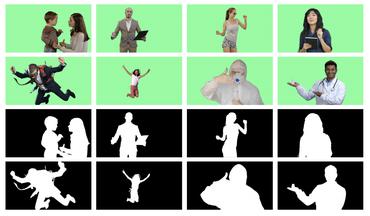Video Matting
13 papers with code • 0 benchmarks • 3 datasets
Image credit: https://arxiv.org/pdf/2012.07810v1.pdf
Benchmarks
These leaderboards are used to track progress in Video Matting
Latest papers with no code
POBEVM: Real-time Video Matting via Progressively Optimize the Target Body and Edge
Deep convolutional neural networks (CNNs) based approaches have achieved great performance in video matting.
Mask-Guided Matting in the Wild
Mask-guided matting has shown great practicality compared to traditional trimap-based methods.
FactorMatte: Redefining Video Matting for Re-Composition Tasks
Based on this observation, we present a method for solving the factor matting problem that produces useful decompositions even for video with complex cross-layer interactions like splashes, shadows, and reflections.
Attention based Memory video portrait matting
We proposed a novel trimap free video matting method based on the attention mechanism.
Temporally Coherent Person Matting Trained on Fake-Motion Dataset
We propose a novel neural-network-based method to perform matting of videos depicting people that does not require additional user input such as trimaps.
Automatic Portrait Video Matting via Context Motion Network
To capture the motion information, we estimate the optical flow and design a context-motion updating operator to integrate features between frames recurrently.
Video Matting via Consistency-Regularized Graph Neural Networks
In this paper, we propose to enhance the temporal coherence by Consistency-Regularized Graph Neural Networks (CRGNN) with the aid of a synthesized video matting dataset.
Background Matting
The current state of the art alpha matting methods mainly rely on the trimap as the secondary and only guidance to estimate alpha.
L1-regularized Reconstruction Error as Alpha Matte
Sampling-based alpha matting methods have traditionally followed the compositing equation to estimate the alpha value at a pixel from a pair of foreground (F) and background (B) samples.
Sparse Coding for Alpha Matting
In this paper, the matting problem is reinterpreted as a sparse coding of pixel features, wherein the sum of the codes gives the estimate of the alpha matte from a set of unpaired F and B samples.

 VideoMatte240K
VideoMatte240K
 VideoMatting108
VideoMatting108
 PhotoMatte85
PhotoMatte85